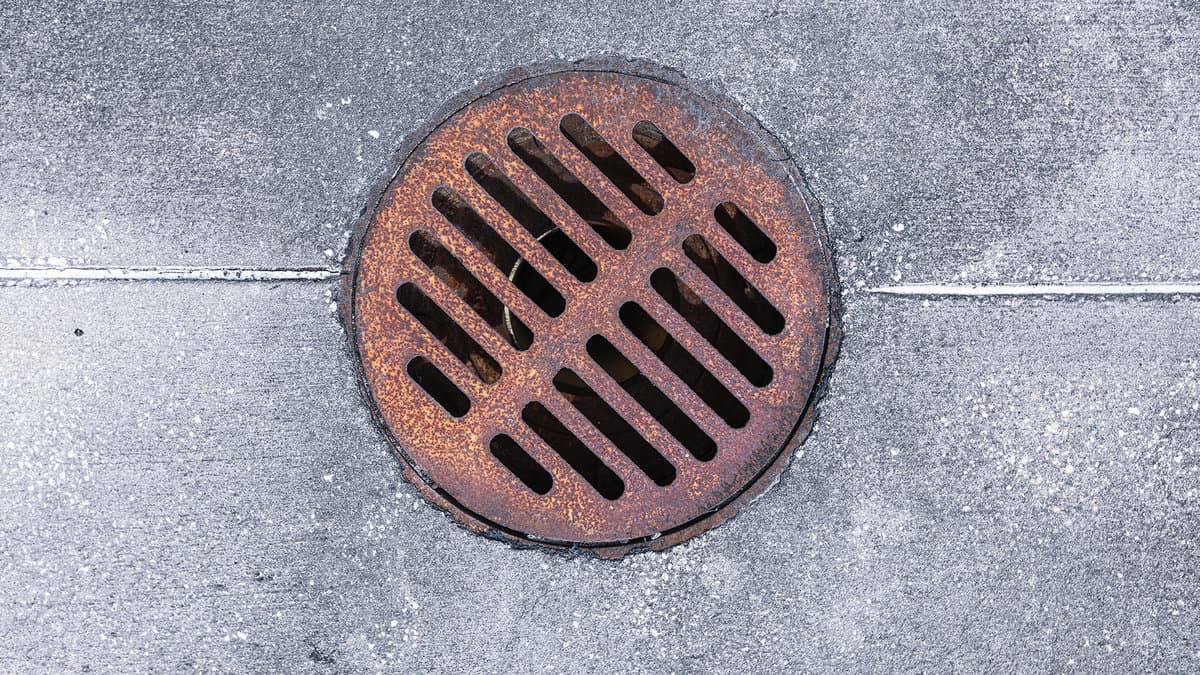When it comes to floor drains, many people think that they are only for use in industrial or commercial settings. However, this is not the case! Floor drains can also be installed in residential garages. In fact, there are many benefits to doing so. In this article, we will cover everything you need to know about installing a floor drain in your garage. We will provide an easy-to-follow step-by-step process, and we will also speak on some of the common mistakes people make when installing a floor drain. So continue reading to learn more! If you’re looking for a way to improve your garage ceiling check out this article.
Table of Contents
Can you put a floor drain in an existing garage?
Yes, The drain may be connected to an existing sewer line or simply carried out to runoff outside. With concrete flooring, the floor will have to be cut to allow the drain body and piping to be installed.
Benefits of Installing a Floor Drain in Your Garage
There are many benefits that come with installing a floor drain in your garage. Here are just a few of them:
Prevents Water from Accumulating on the Floor
If you live in an area with a lot of rainfall, then you know that water can quickly accumulate on your garage floor. This can create a slip and fall hazard, and it can also lead to the growth of mold and mildew. By installing a floor drain, you can prevent water from accumulating on your garage floor.
Makes it Easy to Clean the Garage Floor
Another benefit of installing a floor drain in your garage is that it makes it easy to clean the floor. When you have a floor drain, all you have to do is hose down the floor and the water will quickly drain away. This is much easier than having to mop up puddles of water.
Reduces the Risk of Flooding
If your garage is prone to flooding, then a floor drain can help to reduce the risk of flooding. By quickly draining away water, a floor drain can prevent your garage from being flooded.
Can Help to Improve Drainage Around the Garage
If the drainage around your garage is poor, then installing a floor drain can help to improve it. By draining water away from the garage, a floor drain can help to reduce the amount of water that accumulates around the garage.
Car Maintenance
Another benefit of having a floor drain in your garage is that it can make car maintenance easier. When you have a floor drain, you can easily wash your car without worrying about water damaging your garage floor.
Before Installing a Floor Drain in Your Garage
Now that we have covered some of the benefits of installing a floor drain in your garage, let’s talk about what you need to do before you install one.
Check Local Building Codes
The first thing you need to do before installing a floor drain is to check your local building codes. This is because there may be certain regulations that you need to follow. Permit regulations vary from state to state, so it is important that you check the regulations in your area. Attaching the drain to an existing sewer line will likely require a permit. So be sure to check with your local building department before proceeding.
Choose the Right Location
Another thing you need to do before installing a floor drain is to choose the right location for it. When choosing a location, you need to consider things like drainage and traffic patterns. You also need to make sure that the location you choose is large enough to accommodate the floor drain. A drainage pipe should also be installed in the vicinity of the floor drain to ensure proper drainage. If you have a sloped garage, then it may not be necessary to install a floor drain this is because the sloped garage will allow water to drain away.
Choose the Right Floor Drain
Once you have determined the location of the floor drain, you need to choose the right floor drain. There are many different types of floor drains available on the market, so it is important to do your research and choose the one that is best for your needs.
Check for Existing Utility Lines
Be aware of utility lines or electrical conduits that may be in the way when you are ready to cut the hole for your floor drain. It is always best to err on the side of caution and call your local utility company to come out and mark any lines that may be in the area.
Prepare the Area
After you have chosen the location and type of floor drain, you need to prepare the area. This involves cleaning the area and making sure that there is no debris or dirt. Hazardous materials should also be removed from the area. Once the area is prepared, you can proceed with the installation.
How to Install a Floor Drain in your Garage
Now that we have covered some of the benefits of installing a floor drain in your garage, let’s go over the process of how to install one.
Tools You Will Need:
- Shovel
- Tape Measure
- Hammer
- Drill
- PVC Pipe
- PVC Cutter
- Floor Drain
- PVC Cement
- Concrete Saw or Jackhammer
Installation Process:
Step One: Dig a Trench
The first step is to dig a trench around the perimeter of the area where you want to install the floor drain. The trench should be deep enough for the floor drain and the sloping pipe. A concrete saw can be used to cut the trench if your garage has a concrete floor. A jackhammer can also be used to break up the concrete. Outside a connecting trench will need to be dug to the final drainage point. This is necessary to ensure proper drainage.
Step Two: Install the PVC Pipe
Next, you need to install the PVC pipe in the trench. The PVC pipe will act as a drain for the floor drain. To install the PVC pipe, you need to measure and cut it to fit the length of the trench. Once the PVC pipe is cut, you need to cement it into place. The pipe should be sloping downwards so that water can drain properly. Shim the pipe if necessary to make sure that it is sloping downwards. The pipe should be in a p-trap configuration so that water cannot backflow into the drain.
Step Three: Install the Floor Drain
After the PVC pipe is installed, you need to install the floor drain. To do this, you need to measure and cut a hole in the floor where the drain will be located. Once the hole is cut, you need to insert the drain and cement it into place.
Step Four: Test the Drain
Before the trench is covered, you need to test the drain to make sure it is working properly. To do this, you need to pour a bucket of water into the drain and see if it drains properly. If it does not, then you may need to adjust the drain or add more pipe to the system.
Step Five: Cover the Trench
After the floor drain is installed, you need to cover the trench. To do this, you need to fill the trench back with dirt and compact it. Once the trench is filled, you need to cover it with a piece of plywood. Or if your garage is cement, you can use concrete to fill the trench.
Common Mistakes when Installing a Floor Drain in Your Garage
Now that we have gone over how to install a floor drain in your garage, let’s talk about some of the common mistakes people make.
One of the most common mistakes is not checking local building codes. As we mentioned earlier, it is important to check your local building codes before you begin any type of construction. Failure to do so could result in hefty fines.
Another common mistake is not preparing the area before installation. This step is crucial to ensure that the floor drain is installed properly.
Lastly, another common mistake is not installing a drainage pipe in the vicinity of the floor drain. This could result in water pooling around the drain and causing damage to your garage.
FAQs
Q: Can I put a floor drain in my garage?
A: You can put a floor drain in your garage, but you need to check your local building codes first. There may be certain regulations that you need to follow.
Q: What is the best location for a floor drain in my garage?
A: The best location for a floor drain in your garage is an area that is large enough to accommodate the drain. You also need to make sure that there is proper drainage in the area.
Q: What type of floor drain should I use?
A: There are many different types of floor drains available on the market. It is important to do your research and choose the one that is best for your needs.
Summary
Installing a floor drain in your garage can be a great way to prevent water damage. However, there are a few things you need to keep in mind before you begin the installation process. First, you need to check your local building codes. There may be certain regulations that you need to follow. Second, you need to prepare the area before installation. This step is crucial to ensure that the floor drain is installed properly. Lastly, you need to install a drainage pipe in the vicinity of the floor drain. This could result in water pooling around the drain and causing damage to your garage. Contact a professional if you have any questions.





